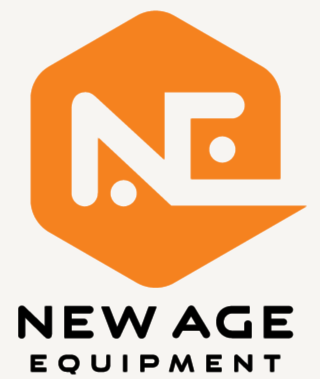Health Care Plans Gain More Flexibility
 On June 13, 2019, the IRS issued final regulations regarding health reimbursement arrangements (HRAs). These types of plans were radically changed and restricted by the Affordable Care Act. The new regulations reinstate the ability of employers to use HRAs to reimburse employees who buy their own health insurance, but the rules can be fairly complicated in certain situations. The full set of rules can be found in the federal register at https://www.federalregister.gov/documents/2019/06/20/2019-12571/health-reimbursement-arrangements-and-other-account-based-group-health-plans. In pdf form (and in typical IRS fashion), this article is 140 pages long. It appears to be a collaboration between the IRS, the Employee Benefits Security Administration, the Department of Labor, the Centers for Medicare & Medicaid Services, and the Department of Health and Human Services, and is titled “Health Reimbursement Arrangements and Other Account-Based Group Health Plans”.
On June 13, 2019, the IRS issued final regulations regarding health reimbursement arrangements (HRAs). These types of plans were radically changed and restricted by the Affordable Care Act. The new regulations reinstate the ability of employers to use HRAs to reimburse employees who buy their own health insurance, but the rules can be fairly complicated in certain situations. The full set of rules can be found in the federal register at https://www.federalregister.gov/documents/2019/06/20/2019-12571/health-reimbursement-arrangements-and-other-account-based-group-health-plans. In pdf form (and in typical IRS fashion), this article is 140 pages long. It appears to be a collaboration between the IRS, the Employee Benefits Security Administration, the Department of Labor, the Centers for Medicare & Medicaid Services, and the Department of Health and Human Services, and is titled “Health Reimbursement Arrangements and Other Account-Based Group Health Plans”.
Following is a nice (and much smaller) article published on June 24, 2019, by Jessica Kuester of Taft Stettinius & Hollister, LLP, which helps explain some of the provisions of the new rules, such as who can and cannot be covered, types of HRAs, effective dates, and other features and restrictions of the new HRA regulations.
--Norman S. Hicks, CPA
Final Regulations Allow Employers to Pay For Employees’ Health Insurance Premiums
Health reimbursement arrangements (HRAs) are a very flexible type of group health plan—they allow employers to reimburse employees for certain medical expenses on a pre-tax basis. Based on the IRS’s interpretation of changes in law that were enacted by the Affordable Care Act (ACA), these arrangements lost most of the flexibility that they had been able to provide for over 50 years. Although HRAs could be integrated with major medical plans offered by employers (i.e., a so-called “integrated HRA”), they could not be offered on a stand-alone basis without the employer incurring a $36,500 per year per participant excise tax. In effect, this meant that employers could no longer reimburse employees for the cost of premiums incurred when purchasing health insurance. New regulations (issued on June 13, 2019) bring back some of the flexibility of HRAs.
What is the new type of HRA?
In a so-called “individual coverage HRA,” employers can reimburse employees for medical expenses (including premiums) that they incur on a pre-tax basis. For each month that they are covered by the individual coverage HRA, employees must be covered by individual health insurance (either offered on the ACA Exchange or not), and employers must substantiate such coverage.
Who can be covered by an individual coverage HRA?
An individual coverage HRA cannot be offered to any employee offered a traditional employer-sponsored group health plan. This means that employees cannot be given a choice between the employer’s traditional group health plan and an individual coverage HRA—employers can only offer one or the other. However, employers can decide to offer an individual coverage HRA to one or more class of employees and a traditional group health plan to the other classes. The acceptable classes are full-time employees, part-time employees, seasonal employees, employees working in the same geographic location (such as the same state or same insurance rating area), collectively bargained employees, salaried employees, hourly employees and newly-hired vs. existing employees. These are only a few examples: there are other types of classes identified in the regulations and additional classes can be formed by combining any of the acceptable classes. In addition, minimum class size rules (generally, 20 class members) apply to employers offering a traditional group health plan to some classes and an Individual Coverage HRA to other classes.
How much can employers reimburse under an individual coverage HRA?
Just like with other types of HRAs, employers can reimburse as much or as little as they want. However, the individual coverage HRA must be offered on the same terms to all employees in the class. So although the amount of reimbursement can vary between classes, they generally cannot vary among the class members (except for variations based on an employee’s age or the number of dependents).
How do employers offer an individual coverage HRA?
Employers offering an individual coverage HRA must notify eligible participants about the individual coverage HRA and its interaction with the premium tax credit that is available to certain individuals under federal tax law. Although the individual coverage HRA itself is considered an employer-sponsored group health plan, the underlying health insurance coverage purchased by the employee is not, so long as the employee’s purchase of the insurance coverage is voluntary, the employer does not select or endorse any particular insurance carrier or coverage, the employer does not receive any kickbacks for an employee’s selection of any particular individual health insurance and each employee is notified annually that the individual health insurance they select is not subject to ERISA.
What about the employer mandate?
The good news: an employer’s offer of reimbursement through an individual coverage HRA counts as an offer of coverage for purposes of the ACA’s employer mandate. The bad news: although the new regulations offer guidance on when an individual coverage HRA will be considered “affordable” for purposes of the premium tax credit, the IRS has not yet issued rules describing when the coverage will be considered “affordable” for purposes of the employer mandate. These rules are likely coming soon.
Are there any other types of new HRAs available under the new regulations?
The new regulations also create an excepted benefit HRA. The excepted benefit HRA is different than the individual coverage HRA in that it only reimburses the employee for costs incurred in connection with “excepted benefits” (such as dental and vision benefits). This new excepted benefit HRA is an HRA offered as part of an employer’s traditional group health program and can reimburse medical expenses even when the employee opts out of the group health plan itself. This is a departure from the current rules that apply to integrated HRAs, which only permit reimbursement of medical expenses when the employee actually enrolls in the group health plan.
The excepted benefit HRA:
• Must limit contributions to $1,800 per year;
• Must be offered in association with a traditional group health plan (although the employee can still receive reimbursement under the excepted benefit HRA even if he or she declines coverage under the traditional group health plan);
• Must not reimburse individual health insurance premiums, group health plan premiums or Medicare premiums (although it can reimburse dental, vision and short term limited duration insurance coverages); and
• Must be uniformly available to all similarly situated individuals.
When can employers start offering these new types of HRAs?
The new types of HRAs can be offered beginning on Jan. 1, 2020. Note that, in order to start offering coverage under the individual coverage HRA on that date, employers will need to take action before then. Most notably, the required notice must be provided prior to Jan. 1, and employees will need to take part in the 2020 open enrollment period for individual coverage, which typically occurs in late 2019.
Jessica E. Kuester is an attorney with Taft Stettinius & Hollister, LLP and represents employers in all of their employee benefit needs. She can be reached at This email address is being protected from spambots. You need JavaScript enabled to view it.. Her article, as reproduced above, can be found at https://www.taftlaw.com/news-events/law-bulletins/final-regulations-allow-employers-to-pay-for-employees-health-insurance-premiums.
Thank you for all of your questions, comments and suggestions for future topics. As always, they are much appreciated. We may be reached in our Dayton office at 937-436-3133 or in our Xenia office at 937-372-3504. Or, visit our website.













